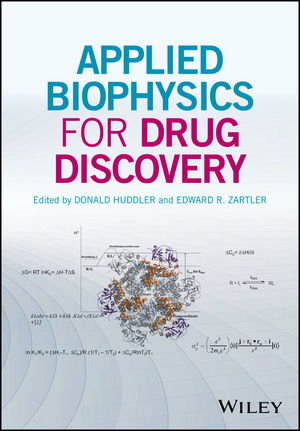The year is done, and
the darkness
Falls from the wings
of Night.
Significant events included the venerable CHI FBDD meeting
in San Diego, the NovAliX Biophysics conference in Strasbourg, and the
first-ever fragment conference in Shanghai. We discussed a special issue of Essays in Biochemistry devoted to
structure-based drug design, and Teddy came out of retirement to provide an
entertaining summary of his experience putting together a book on biophysics in
drug discovery - well worth reading if you're ever tempted to edit one
yourself.
As in years past, several reviews were devoted to the broad
topic of FBDD. Below, I’ll outline the general reviews, followed by those
focusing on particular targets, techniques, and other topics.
György Keserű (Hungarian Academy of Sciences) and Mike Hann
(GlaxoSmithKline) ask “what is the future for fragment-based drug discovery?”
in Fut. Med. Chem. After a concise
summary of the topic, they answer that it “includes target discovery and
validation, the development of chemical biology probes, pharmacological tools
and more importantly drug-like compounds.” In other words, the future looks
bright.
FBDD is more comprehensively covered by Ben Davis and
Stephen Roughley (Vernalis) in Ann.
Reports Med. Chem. This is a complete, self-contained guide to the field,
covering everything from history, theory, fragment library design, and
fragment-to-lead approaches. It is ideal for a
newcomer, but there are enough insights throughout that it makes a rewarding
read for experts too.
And rounding out general reviews, Christopher Johnson
(Astex) and collaborators examined all 28 successful fragment-to-lead programs
published in 2016, defined as at least a 100-fold improvement in affinity to a
2 µM or better compound. This is a sequel to our analysis of the 2015
literature, also published in J. Med. Chem., and many of the trends are similar. Interestingly, many leads
maintained high ligand efficiencies, and there was no correlation between the
“shapeliness” (deviation from planarity) of fragments and that of the resulting
leads. Consistent with our recent poll on the importance of structural
information, 25 of the 28 examples used crystallography at some point.
Targets
Three of the success stories from 2016 involved
bromodomains, the subject of an entire month of Practical Fragments’ posts last year. In Arch. Pharm., Mostafa Radwan and Rabah Serya (Ain Shams University,
Cairo) review this target class, with a particular emphasis on the four BET
family proteins.
More than 30% of enzymes are metalloenzymes, yet these are
targeted by fewer than 70 FDA-approved drugs. One of the first published
examples of FBDD involved a metalloenzyme, but most efforts have been focused
on a limited set of metal-binding pharmacophores, such as hydroxamic acids. Seth
Cohen (University of California, San Diego) has been steadily building
libraries of metallophilic fragments, and in Acc. Chem. Res. he describes how this approach can lead to new
classes of inhibitors.
Protein-protein interaction inhibitors are another
underrepresented class of drugs, though one approved FBDD-derived molecule
falls into this category. In Methods,
Daisuke Kihara and collaborators at Purdue University look at in silico methods
to discover PPI inhibitors, including fragment-based approaches.
Unlike PPIs, kinases have been highly successful drug
targets. We recently highlighted one review of cyclin-dependent kinases (CDKs),
and in Eur. J. Med. Chem. Marco
Tutone and Anna Maria Almerico (Università di Palermo) provide another.
Although the main focus is on in silico methods, there is a section on FBDD.
Techniques
As noted above, X-ray crystallography has played a role in most
successful fragment to lead programs. In the open-access journal IUCrJ, Sir Tom Blundell (University of
Cambridge) provides an engaging and personal view of protein crystallography, a
field in which he has played a starring role, starting with his early involvement
in determining the crystal structure of insulin. He also notes that the
interchange of ideas and techniques between academia and industry has long been
a crucial driver of advances.
NMR was the first practical method used for FBDD, so it is
not surprising that there are several reviews on the topic. In Arch. Biochem. Biophys., Michael Reily
and colleagues at Bristol-Myers Squibb provide a detailed overview of NMR in
drug design. This covers not just the ligand- and protein-detection methods often
used in fragment screening, but also more intensive techniques to characterize
protein-ligand interactions.
Artifacts are a fact of life in both FBDD and HTS, and it is
always important to recognize these early. In J. Med. Chem. Anamarija Zega (University of Ljubljana) discusses
how NMR can help. This includes methods to detect aggregators and covalent
modifiers. Of course, NMR methods can introduce their own artifacts, and these
are also covered.
Other topics
Speaking of artifacts, PAINS are responsible for quite a
few. The term “PAINS” has also been somewhat controversial, and in a new paper
in ACS Chem. Biol. Jonathan Baell
(Monash University) and J. Willem Nissink (AstraZeneca) examine the “utility
and limitations” of the term Jonathan coined seven years ago. As they
acknowledge, the PAINS filters were derived from just 100,000 compounds run in
a limited set of assays. This means that not every bad actor will be recognized
by PAINS filters, and some compounds that are may only be PAINful in certain
assay formats. Like Lipinski’s rule of 5, it is important to recognize the
limits of applicability. As the authors note, “the key is to remain
evidence-based.”
Another sometimes controversial topic is ligand efficiency
and associated metrics, the subject of an analysis in Expert Opin. Drug Disc. by Giovanni Lentini and collaborators at
the University of Bari Aldo Moro. This includes extensive tables of rules and
metrics, both common and obscure. The authors note that, while metrics can be
useful, it is important not to use them as a “magic box.” As they quote William
Blake, “to generalize is to be an idiot.”
Shawn Johnstone and Jeffrey Albert (IntelliSyn Pharma)
discuss pharmacological property optimization for allosteric ligands in a
review in Bioorg. Med. Chem. Lett. As
we recently noted, fragments are particularly suited for discovering allosteric
sites, and this paper discusses how to characterize these.
Finally, Jörg Rademann and collaborators at Freie
Universität Berlin discuss protein-templated fragment ligations in Angew. Chem. Int. Ed. Earlier this year
we highlighted some of his work, and this review provides a thorough analysis
of both reversible and irreversible approaches, with good discussions of
detection methods, chemistries, and case studies.
That’s it for the year. Thanks for reading, and especially
for commenting.
And may 2018 be filled with music, and light.




 , the Cathedral of Notre Dame
, the Cathedral of Notre Dame  , the Great Wall of China
, the Great Wall of China , and the most recent
, and the most recent  . This blog typically
. This blog typically 







